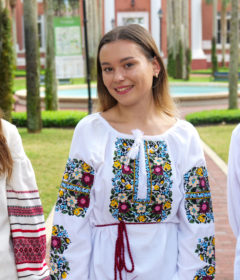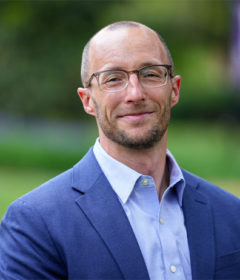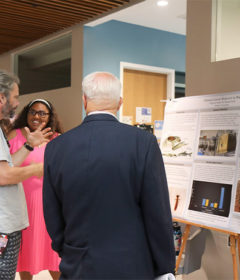“Ain’t I a Woman!” Comes to Stetson on Tuesday, Feb. 7
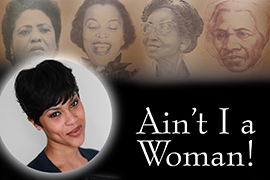
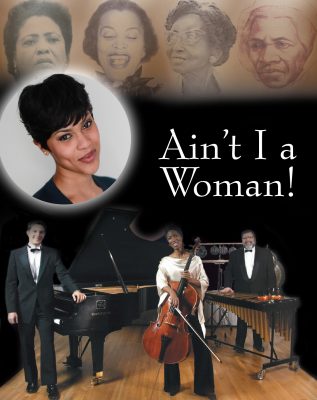 Clementine Hunter grew up picking cotton on Louisiana plantations in the late 1800s. An illiterate child of former slaves, she took up painting later in life and created thousands of pieces of artwork, which hang in museums nationwide.
Clementine Hunter grew up picking cotton on Louisiana plantations in the late 1800s. An illiterate child of former slaves, she took up painting later in life and created thousands of pieces of artwork, which hang in museums nationwide.
She’s one of four African-American women featured in the stage performance, “Ain’t I a Woman!” by the Core Ensemble, which will come to Stetson University’s Lee Chapel on Tuesday, Feb. 7, at 7:30 p.m. The event is free and open to the public.
The work combines theater and chamber music, with New York City actress Shayla Simmons portraying the four women while a musical trio of a piano, cello and percussion plays along.
A few of these African-American women are well known, such as abolitionist Sojourner Truth and novelist Zora Neale Hurston, who once lived in Eatonville, just outside Orlando, and wrote the acclaimed “Their Eyes Were Watching God” in 1937. But others like civil rights worker Fannie Lou Hamer aren’t as well known, said Simmons during a phone interview this week from New York City, where the Core Ensemble was in rehearsals.
“It’s amazing to see all that they have done, and … I didn’t learn about them in school at all,” said Simmons, a singing actress who has performed in theater, an independent film and commercials. “They’re not household names.”
Simmons just started with the Core Ensemble and will perform in the role for the first time at Stetson on Tuesday night. Afterward, “Ain’t I a Woman!” will go on the road during the next few months with performances on the East Coast and West Coast, she said.
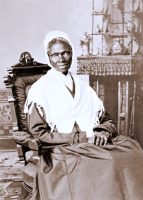
On stage, Simmons dresses and speaks as each of the four African-American women – Clementine Hunter, Zora Neale Hurston, Fannie Lou Hamer, and ex-slave Sojourner Truth – along with a musical score of blues and spirituals from the Deep South, the Jazz Age and contemporary music by African American composers.
Elisabeth Poeter, Ph.D., a Stetson associate professor of German and Director of Gender Studies, received a grant from the Artist & Lecturer Concert Series to bring the performance to campus to celebrate Black History Month and Women’s History Month, and also to mark the 25th anniversary of the university’s Gender Studies program, said Kristie Born, a Gender Studies committee member representing the School of Music, where she coordinates and teaches accompanying and functional piano.
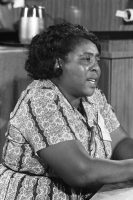
The performance takes its name from the speech delivered extemporaneously by Sojourner Truth in 1851 at the Ohio Women’s Rights Convention – “Ain’t I a Woman?”
Truth was born into slavery in New York in 1797 and became an activist for the abolition movement and women’s rights after escaping to freedom in 1827. Originally named Isabella, she had at least three children sold away from her, according to History.com. Later, she adopted the name “Sojourner Truth,” became a prominent speaker and met President Abraham Lincoln at the White House.
Fannie Lou Hamer was the youngest of 20 children born to sharecroppers in Mississippi in 1917 and started work as a field hand at age 6. In the 1960s, she joined with civil rights leaders to encourage African-Americans to register to vote – a move that got her fired from her job at a plantation. Hamer said, “They kicked me off the plantation, they set me free. It’s the best thing that could happen. Now I can work for my people,” according to The New York Times.
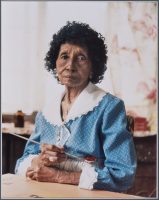
Clementine Hunter has been called Louisiana’s most famous folk artist. Born to former slaves in 1886, she worked on a cotton plantation and later moved to Melrose Plantation, created by a former slave, where the plantation curator encouraged her to take up painting in her 50s. She created thousands of pieces of artwork, childlike scenes of life on the plantation, which can be found in the Smithsonian Institution and museums across the country.
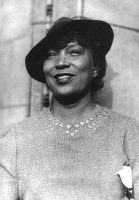
Zora Neale Hurston was born in 1891, the daughter of a preacher, and grew up in Eatonville, just north of Orlando. She graduated from Barnard College and was a writer in New York during the Harlem Renaissance of the 1920s. When she died in 1960, she had written four novels, an autobiography, two books of folklore, short stories and plays, but she struggled financially at the end of her life, dying poor and alone in Fort Pierce.
As part of Black History Month, the School of Music has featured black composers in early February for more than 20 years, Born said. The Core Ensemble is based in South Florida, and has toured around the United States and the world since 1993.
“This is very different from what we usually do in the School of Music,” Born said. “There’s contemporary art music in the show, but there are also jazz and African-American spiritual influences. It’s a combination of all of these styles.”
-Cory Lancaster

